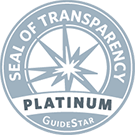Please bookmark this project and visit weekly for the latest update. This project is inspired by two girls, Macy and Addie, who shared an uncommon brightness in life that leads our team to ask, how can a parent – scientific team bring highly effective treatments to clinical trials for children with advanced, metastatic hepatoblastoma? 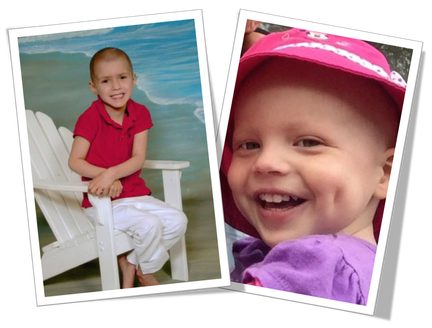 [ 09/14/17: Now with Owls for Avery Foundation! ]
[ 09/14/17: Now with Owls for Avery Foundation! ] 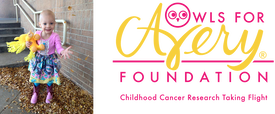 [ 09/14/17: Now also supported with a generous partnering contribution from the family of Dawson Willcock ] We’ve come a good ways We are grateful for the partnership with the Macy Easom Cancer Research Foundation over the last 5 years. Our shared mission has been to make hepatoblastoma a uniformly-survivable cancer of childhood. Together, we have made substantial progress towards this goal by:
[ 09/14/17: Now also supported with a generous partnering contribution from the family of Dawson Willcock ] We’ve come a good ways We are grateful for the partnership with the Macy Easom Cancer Research Foundation over the last 5 years. Our shared mission has been to make hepatoblastoma a uniformly-survivable cancer of childhood. Together, we have made substantial progress towards this goal by:
- Understanding what has been done thus far by the international hepatoblastoma research community through direct engagement in a lecture series,
- Piloting model development and new drug discovery in hepatoblastoma — with the identification of Thapsigargin and Polo-like Kinase (PLK1) inhibitors as potential new treatments for further investigation, and
- Creating and publishing in the 2016 peer review literature the Hepatoblastoma Roadmap for a Cure.
What’s next? Macy’s and Addie’s Pilot Project goes “back to basics”, asking if new drugs to treat metastasis (tumors growing and spreading) can be tested in something simpler, less expensive and faster than mice… the common farm-raised egg! 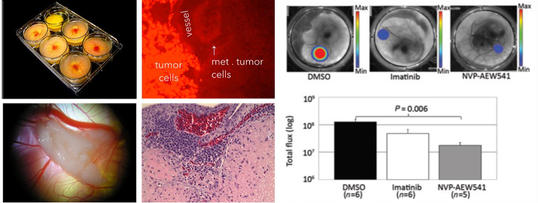 In collaboration with Addie and Macy’s families, cc-TDI is (1) developing new hepatoblastoma cell lines & xenograft models, and (2) automating the quail chorioallantois membrane (CAM) assay to test drugs that stop hepatoblastoma tumor cell growth and spread. This is an open science forum, so please stay tuned for weekly updates of the logistics. The results will appear in the scientific publications that we plan to publish… most importantly, though, our late-breaking results will be shared in real time with our scientific and clinical collaborators so that promising new treatments can move quickly to clinical trials. We are grateful to the Macy Easom Foundation for funding our mechanical engineer, Samuel, and for Addie’s family sponsoring the laboratory supply and research support costs that enable Samuel to move this project forward at top speed. Here are Samuel’s updates
In collaboration with Addie and Macy’s families, cc-TDI is (1) developing new hepatoblastoma cell lines & xenograft models, and (2) automating the quail chorioallantois membrane (CAM) assay to test drugs that stop hepatoblastoma tumor cell growth and spread. This is an open science forum, so please stay tuned for weekly updates of the logistics. The results will appear in the scientific publications that we plan to publish… most importantly, though, our late-breaking results will be shared in real time with our scientific and clinical collaborators so that promising new treatments can move quickly to clinical trials. We are grateful to the Macy Easom Foundation for funding our mechanical engineer, Samuel, and for Addie’s family sponsoring the laboratory supply and research support costs that enable Samuel to move this project forward at top speed. Here are Samuel’s updates 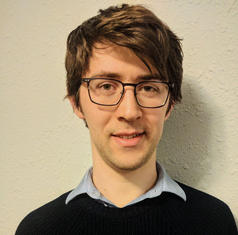
research update 02/22/17: I focused the newly acquired IVIS 3D so that it is completely operational for bioluminescent imaging of glowing tumor cells that express firefly luciferase [special shout-out to our heroes Domingos Barroso, Dave Panzarella and Rob Wimette at Perkin-Elmer who enhanced our instrument for its super-night vision!]. I conducted an experiment on Quail embryos to see if a concentrated air burst could cause some localized cell damage to cause angiogenesis (new blood vessel growth) before we add the hepatoblastoma tumor cells. I also researched imaging software to process large experimental batches. 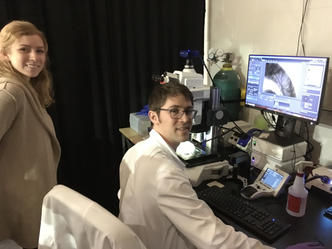 research update 03/02/17: I have been imaging and analyzing a batch of quail eggs to determine which embryos are viable for experimentation (our “machine vision” approach). I have also been culturing a batch of HB-214 hepatoblastoma tumor cells.
research update 03/02/17: I have been imaging and analyzing a batch of quail eggs to determine which embryos are viable for experimentation (our “machine vision” approach). I have also been culturing a batch of HB-214 hepatoblastoma tumor cells. 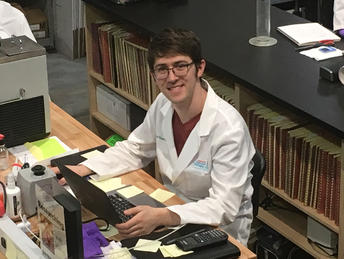 research update 03/08/17: I have imaged and processed the quail embryonic stages and identified the trends in having the most viable quail eggs to usefor studies. I am culturing hepatoblastoma cell line HB214 and rhabdomyosarcoma cell culture U48484 (a positive control for luminescence of the firefly reporter gene that makes tumor cells glow in the IVIS-3D instrument). Genetic information obtained from our patient-derived xenograft mouse model collaborators in France. research update 03/16/17: Some weeks are mixed. The HB214 culture did not grow well, or enough for our chemical (drug) screen. We’ll try again. Genetic data on cultures from France is being analyzed & reformatted for our records. I also am making models to be 3d printed for another quail egg opener. Really good news: explants of hepatoblastom PDX models (CTG-1072 and CTG-1957) from Champions oncology arrive soon!
research update 03/08/17: I have imaged and processed the quail embryonic stages and identified the trends in having the most viable quail eggs to usefor studies. I am culturing hepatoblastoma cell line HB214 and rhabdomyosarcoma cell culture U48484 (a positive control for luminescence of the firefly reporter gene that makes tumor cells glow in the IVIS-3D instrument). Genetic information obtained from our patient-derived xenograft mouse model collaborators in France. research update 03/16/17: Some weeks are mixed. The HB214 culture did not grow well, or enough for our chemical (drug) screen. We’ll try again. Genetic data on cultures from France is being analyzed & reformatted for our records. I also am making models to be 3d printed for another quail egg opener. Really good news: explants of hepatoblastom PDX models (CTG-1072 and CTG-1957) from Champions oncology arrive soon! 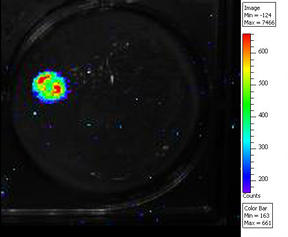 research update 03/22/17: This week I imaged untreated tumors on the CAM assay using luminescence. I also 3D modeled part of the second quail egg opener and have been reviewing the data sent to us for the hepatoblastoma PDX models. research update 03/29/17: I conducted batch of luminescent imaging after 72 hours – but did not get signal. I prepared another batch of quail for imaging and placed the cancer slides. I ordered parts for the second quail egg opener.
research update 03/22/17: This week I imaged untreated tumors on the CAM assay using luminescence. I also 3D modeled part of the second quail egg opener and have been reviewing the data sent to us for the hepatoblastoma PDX models. research update 03/29/17: I conducted batch of luminescent imaging after 72 hours – but did not get signal. I prepared another batch of quail for imaging and placed the cancer slides. I ordered parts for the second quail egg opener.  research update 04/05/17: I imaged another batch of quail eggs and changed the method of luciferin application. Noticeable (but not yet robust) luminescence was detected. I also designed the second quail egg opener to be 3D printed and sent out designs for laser cutting.
research update 04/05/17: I imaged another batch of quail eggs and changed the method of luciferin application. Noticeable (but not yet robust) luminescence was detected. I also designed the second quail egg opener to be 3D printed and sent out designs for laser cutting. 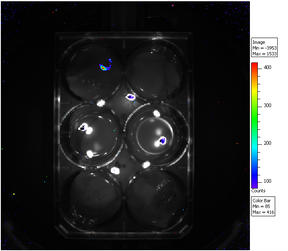 research update 04/12/17: This week I have almost finished culturing enough HB-214 to run a drug test. In order to improve the luminescent response for the CAM assay I have run the next batch of quail eggs with the cancer sample on 3D scaffolds instead of glass coverslides. I also assisted another researcher in applying a tumor tissue sample to a CAM assay.
research update 04/12/17: This week I have almost finished culturing enough HB-214 to run a drug test. In order to improve the luminescent response for the CAM assay I have run the next batch of quail eggs with the cancer sample on 3D scaffolds instead of glass coverslides. I also assisted another researcher in applying a tumor tissue sample to a CAM assay. 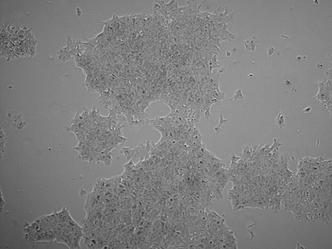 research update 04/19/17: Today, this bright blob picture is exciting! Materials science gave us a special innovation and leap forward. I conducted luminescent imaging of CAM assays to determine reproducibility. The luminescence did well using the 3D scaffolds and will be used for future experiments. Another advantage of the 3D scaffold is that hydrogel may no longer be required making the process of preparing the cancer slide much easier. Overall it was a fairly energizing week!
research update 04/19/17: Today, this bright blob picture is exciting! Materials science gave us a special innovation and leap forward. I conducted luminescent imaging of CAM assays to determine reproducibility. The luminescence did well using the 3D scaffolds and will be used for future experiments. Another advantage of the 3D scaffold is that hydrogel may no longer be required making the process of preparing the cancer slide much easier. Overall it was a fairly energizing week! 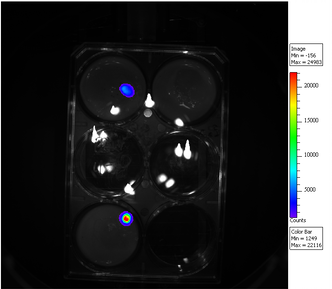 research update 04/26/17: This past week I have been trying to improve vascularization of the cancer sample added to the CAM assay (surface of the quail egg). The latest method had great results, when I removed the cancer sample and flipped it over I could clearly see the blood vessels throughout it. I am also preparing HB-214 for adding green fluorescence and luciferase so that it can be imaged when added to the CAM.
research update 04/26/17: This past week I have been trying to improve vascularization of the cancer sample added to the CAM assay (surface of the quail egg). The latest method had great results, when I removed the cancer sample and flipped it over I could clearly see the blood vessels throughout it. I am also preparing HB-214 for adding green fluorescence and luciferase so that it can be imaged when added to the CAM. 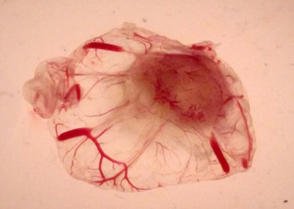
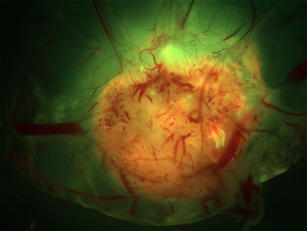 research update 05/03/17: This week I conducted studies to create a robust positive control for the CAM assay. I used a synthetic extracellular matrix hydrogel plus tumor cells applied directly to the quail egg membrane. Three days later I removed the cancer in hydrogel and observed that it was thoroughly vascularized. When imaged it luminesced brightly. The next step is to minimize observed variation in the luminescence. {below, discussions with Brian, on left, regarding the degree of vascularity of the CAM)
research update 05/03/17: This week I conducted studies to create a robust positive control for the CAM assay. I used a synthetic extracellular matrix hydrogel plus tumor cells applied directly to the quail egg membrane. Three days later I removed the cancer in hydrogel and observed that it was thoroughly vascularized. When imaged it luminesced brightly. The next step is to minimize observed variation in the luminescence. {below, discussions with Brian, on left, regarding the degree of vascularity of the CAM) 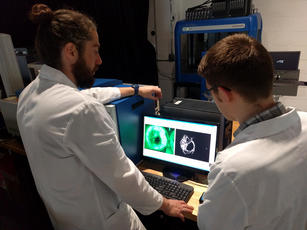 research update 05/10/17: This week I conducted another experiment on the CAM assay using a 3D scaffold and the results were fairly consistent and but with an outlier. I will be redoing the experiment with some slight changes to hopefully improve the results which had a standard error of <12%.
research update 05/10/17: This week I conducted another experiment on the CAM assay using a 3D scaffold and the results were fairly consistent and but with an outlier. I will be redoing the experiment with some slight changes to hopefully improve the results which had a standard error of <12%. 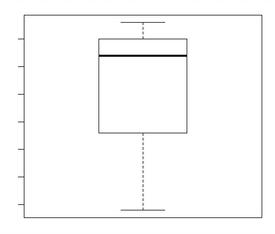 research update 05/17/17: I conducted an experiment to determine which extracellular matrix should be used for the CAM assay. GelMatrix#2 had the lowest standard error of 2.5%. This gel is now being tested on the quail embryos.
research update 05/17/17: I conducted an experiment to determine which extracellular matrix should be used for the CAM assay. GelMatrix#2 had the lowest standard error of 2.5%. This gel is now being tested on the quail embryos. 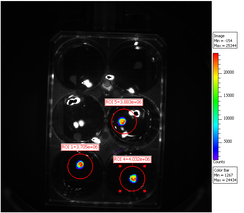 research update 05/24/17:This week I tested two different extracellular matrix gels on the CAM assay and one had a coefficient of variation of 9.5%. I plan to use this gel to conduct a drug test to determine its effects against a prototype cell culture in ovo. ps. thanks to Noah for the really cool picture of the new xenograft explant culture, CTG-1072. Will it immortalize into a new hepatoblastoma cell line? We’ll see in several months.
research update 05/24/17:This week I tested two different extracellular matrix gels on the CAM assay and one had a coefficient of variation of 9.5%. I plan to use this gel to conduct a drug test to determine its effects against a prototype cell culture in ovo. ps. thanks to Noah for the really cool picture of the new xenograft explant culture, CTG-1072. Will it immortalize into a new hepatoblastoma cell line? We’ll see in several months. 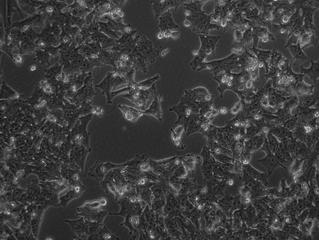
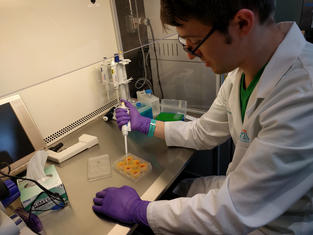 research update 05/31/17: Delays in commerce happen… I was unable to conduct the drug test due to a vendor not sending materials in time. as such the experiment is delayed until the materials are received. I have been trying to grow organ and tumor sections on the CAM with varying outcomes. I have had vascularization of the slice, but hydration is an issue. Here is an up close image of a piece of mouse liver that was on the CAM for 24 hours. ps. stay tuned for the incredible news of all the hepatoblastoma models received last week from our collaborators at Xentech!
research update 05/31/17: Delays in commerce happen… I was unable to conduct the drug test due to a vendor not sending materials in time. as such the experiment is delayed until the materials are received. I have been trying to grow organ and tumor sections on the CAM with varying outcomes. I have had vascularization of the slice, but hydration is an issue. Here is an up close image of a piece of mouse liver that was on the CAM for 24 hours. ps. stay tuned for the incredible news of all the hepatoblastoma models received last week from our collaborators at Xentech!  research update 06/14/17: The extra-cellular matrix has finally arrived and I am currently conducting an experiment to determine what coefficient of variation it will have in the CAM drug test control. We have received a large batch of tissue samples and cell lines from our collaborators in France (almost 2 dozen different patient’s samples!) These can be used to make even more cell lines so that we can test drugs on a wide variety of biologically independent hepatoblastoma cell lines making the results far more significant. I am refining the process for slicing up organs to place on the CAM and for dyeing them for fluorescence microscopy. Here is an 8x image of a dyed mouse liver.
research update 06/14/17: The extra-cellular matrix has finally arrived and I am currently conducting an experiment to determine what coefficient of variation it will have in the CAM drug test control. We have received a large batch of tissue samples and cell lines from our collaborators in France (almost 2 dozen different patient’s samples!) These can be used to make even more cell lines so that we can test drugs on a wide variety of biologically independent hepatoblastoma cell lines making the results far more significant. I am refining the process for slicing up organs to place on the CAM and for dyeing them for fluorescence microscopy. Here is an 8x image of a dyed mouse liver. 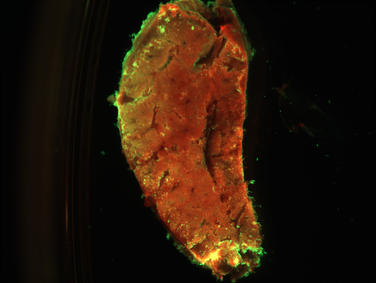 research update 06/21/17: I have conducted a CAM control experiment that had a coefficient of variation of 9.5% and as such have settled on an extracellular matrix for conducting the drug tests. research update 06/28/17: I have conducted a drug test experiment; as is seen the first time with an experiment – we ran into an unexpected issue: the drug reacted poorly with the extracellular matrix and seems to have precipitated. However the control had a coefficient of variation of 15% which is good for proving the repeatability of the experiment.
research update 06/21/17: I have conducted a CAM control experiment that had a coefficient of variation of 9.5% and as such have settled on an extracellular matrix for conducting the drug tests. research update 06/28/17: I have conducted a drug test experiment; as is seen the first time with an experiment – we ran into an unexpected issue: the drug reacted poorly with the extracellular matrix and seems to have precipitated. However the control had a coefficient of variation of 15% which is good for proving the repeatability of the experiment. 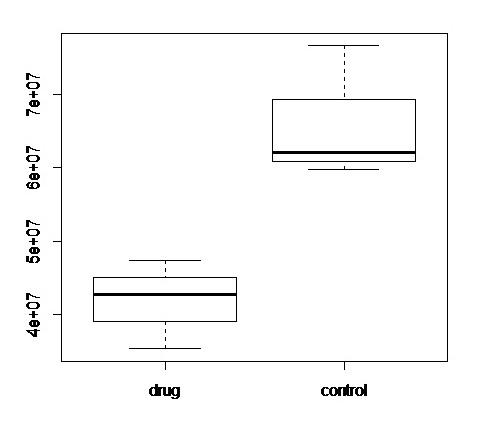 research update 07/12/17: I have conducted a drug test on the CAM and have statistically significant results! The control and drug quail embryo groups results had a coefficient of variation just less than 15%. This means that the method for the drug test on the quail CAM is possibly correct, however I will need to replicate the results to prove the method is robust as a final system and method.
research update 07/12/17: I have conducted a drug test on the CAM and have statistically significant results! The control and drug quail embryo groups results had a coefficient of variation just less than 15%. This means that the method for the drug test on the quail CAM is possibly correct, however I will need to replicate the results to prove the method is robust as a final system and method.
research update 07/19/17: This week has not been good for the quail with a large number of unfertilized and weak yolks. I have been transfecting GFP and luciferase into the hepatoblastoma cell lines we have and hopefully they will grow quickly and without contamination.
research update 07/26/17 and 08/02/17: I conducted an experiment to improve the quail drug assay method. The results were not conclusive so I will be conducting further experiments into how the cancer sample is added to the membrane and hos it becomes vascularized. The latest drug test had problems with the control group of quail, so I am repeating the experiment with a larger experiment population.
research update 08/17/17: This week is the Nanocourse.
research update 08/23/17: A drug test at higher dosage was conducted on the quail CAM assay but there was no significant difference between the control and drug population. When imaging the assay I noticed greater than usual variance in the control so I will be repeating the experiment with an even higher drug dosage. We have run into a technical difficulty that interfered with the latest quail CAM assay and are working hard to get the machine operating again. 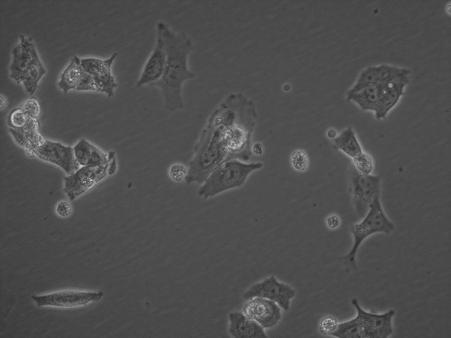 research update 08/30/17: I have been culturing a new cell culture that we received from France (HB-279). It is slow growing but appears to be doing well. The plan is to expand this cell line and transfect it with a fluorescent gene and luciferase gene so that it can be imaged on the in a CAM drug assay. We are still having technical difficulties with our primary imaging instrument, but we will be trying to use a different machine on the next batch of quail eggs.
research update 08/30/17: I have been culturing a new cell culture that we received from France (HB-279). It is slow growing but appears to be doing well. The plan is to expand this cell line and transfect it with a fluorescent gene and luciferase gene so that it can be imaged on the in a CAM drug assay. We are still having technical difficulties with our primary imaging instrument, but we will be trying to use a different machine on the next batch of quail eggs. 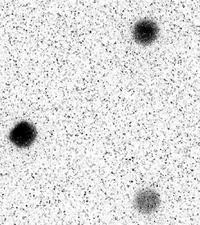 research update 09/06/17: We tested the alternative camera and it was able to read the luminescence but not as well as the old one. We will be able to use this machine for now and as a back up when we get a low temperature camera. The three dots are three scaffolds on a quail CAM that have been seeded with a different numbers of cells on each. The hepatoblastoma cells from Franceare growing slowly but steadily. I expect it will take a few weeks to even two months to expand each cell line and I don’t want to have too many in the incubator at once to decrease contamination concerns.
research update 09/06/17: We tested the alternative camera and it was able to read the luminescence but not as well as the old one. We will be able to use this machine for now and as a back up when we get a low temperature camera. The three dots are three scaffolds on a quail CAM that have been seeded with a different numbers of cells on each. The hepatoblastoma cells from Franceare growing slowly but steadily. I expect it will take a few weeks to even two months to expand each cell line and I don’t want to have too many in the incubator at once to decrease contamination concerns. 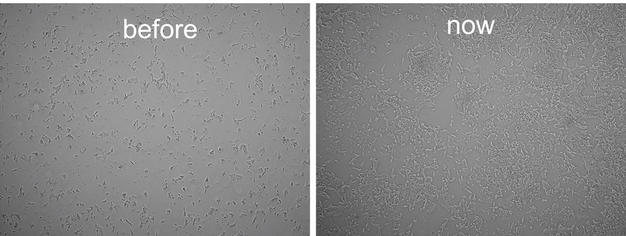 research update 09/13/17: The hepatoblastoma cells from France have had mixed results, with HB279 growing quite well but HB295 has been dying off. You can see in the photos how much HB279 has expanded in two weeks. I have prepared a batch of quail for a drug test this weekend. ps. Owls for Avery Foundation is joining the Project! stay tuned for updates as this project expansion unfolds!
research update 09/13/17: The hepatoblastoma cells from France have had mixed results, with HB279 growing quite well but HB295 has been dying off. You can see in the photos how much HB279 has expanded in two weeks. I have prepared a batch of quail for a drug test this weekend. ps. Owls for Avery Foundation is joining the Project! stay tuned for updates as this project expansion unfolds! 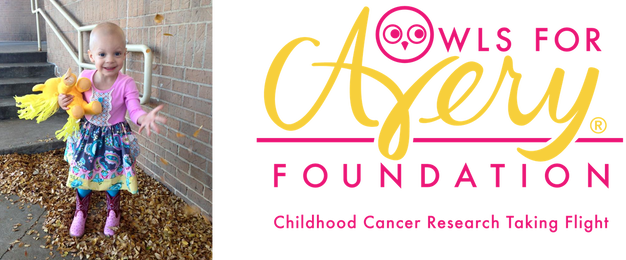
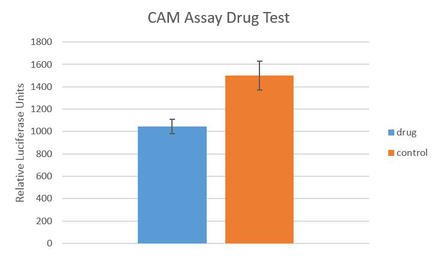 research update 09/20/17: I have conducted a drug test on the CAM assay with results that reach statistical significance. The coefficient of variation for both the drug and control groups were well under 15%. These results mean that I will be able to continue with the CAM drug tests using the backup machine, and that the CAM drug assay is progressing quickly.
research update 09/20/17: I have conducted a drug test on the CAM assay with results that reach statistical significance. The coefficient of variation for both the drug and control groups were well under 15%. These results mean that I will be able to continue with the CAM drug tests using the backup machine, and that the CAM drug assay is progressing quickly.
research update 09/27/17: I have conducted another CAM assay drug test with statistically significant positive results! The drug test is approaching operational with more replicates needing to be done to ensure that it is robust enough. The hepatoblastoma cell cultures are growing slowly but steadily.
research update 10/04/17: I have conducted a drug combination study using the quail assay; unfortunately, the drug combination was not effective against this particular type of cancer. The hepatoblastoma cells are growing well; however, one of the cultures has a bacterial contamination that we will attempt to clear with antibiotics (this is not atypical in cell culture). We have backup vials in the liquid nitrogen tank we can go back to if needed. Also, we’ve priced out DNA & RNA sequencing of all the samples from France.
research update 10/18/17: We have conducted another quail CAM drug test to determine if it has consistent results. The results were not consistent with a previous experiment but the drug vial my have gone bad so we will be redoing it with a new batch. The bacterial infection in the hepatoblastoma cells is clearing. The cells are growing consistently again and we have conducted an antibiotic kill curve drug test for antibiotic selection. Soon we will be able to conduct a luciferase gene transfection.
research update 11/01/17: I have conducted another drug test on the CAM with positive results. Consistent results for the same experiment is important for proving that the CAM drug test assay is a robust experimental method. This result is another step closer to having a fully operational drug test –we are almost there. I have made a first attempt to add luciferase to a hepatoblastoma cell line; however, this particular method did not work. I will try to add the luciferase using different conditions. (note from Charles: Samuel is getting married! There will be a gap in updates for a few weeks) 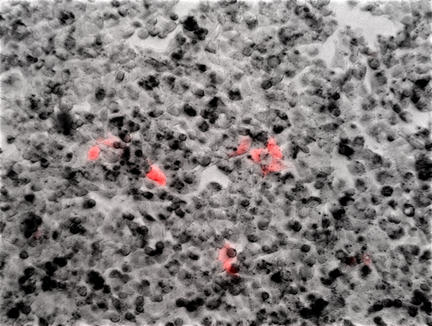 research update 12/06/17: I have transfected cells with luciferase and red fluorescent protein. Hopefully these cells will proliferate and I will be able to use them on the CAM assay. I am culturing up more hepatoblastoma cell lines and will be trying to transfect them in the coming month.
research update 12/06/17: I have transfected cells with luciferase and red fluorescent protein. Hopefully these cells will proliferate and I will be able to use them on the CAM assay. I am culturing up more hepatoblastoma cell lines and will be trying to transfect them in the coming month.
research update 12/13/17: I have been conducting an antibiotic selection of the transfected cells and am preparing another transfection. I have conducted a drug test on three different hepatoblastoma cell lines to share with our collaborator Stefano Cairo at Xentech.
research update 12/20/17: I am conducting an antibiotic selection kill curve that I will be using for transfecting luciferase into additional hepatoblastoma cell lines.
research update 01/03/18: The hepatoblastoma cell lines have been growing slowly but steadily. I have conducted more antibiotic selection experiments and will be transfecting additional cell lines with luciferase so that I can use them on the drug assay. The transfected hepatoblastoma cells have been growing quickly but I was unable to kill off all of the untransfected cells so I have increased the antibiotic dosage and hopefully they will be ready for testing soon.
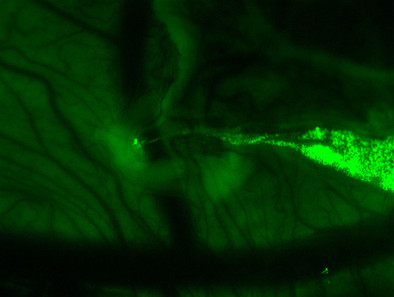 SMXLL
SMXLL
 SMXLL
SMXLL
 SMXLL
SMXLL
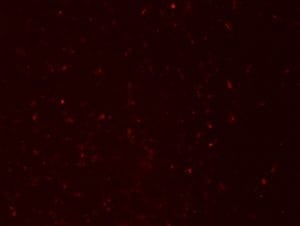
metastasis did not increase. This batch of quail had a high mortality rate
forcing me to end the experiment early. I will make a few changes then try
again next week.
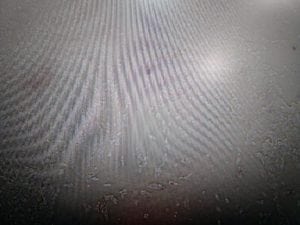
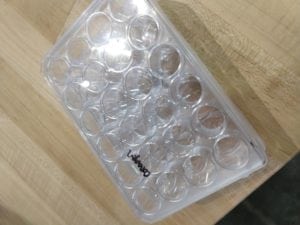
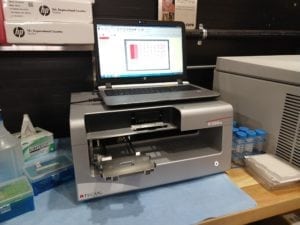
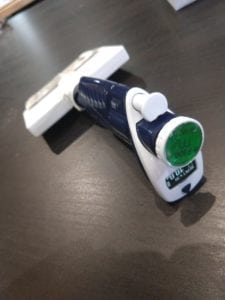
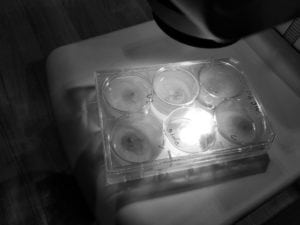
Samuel’s update: I have found a new source of quail eggs and they have better survival than the previous supplier (which undergoing a management change). We are re-optimizing our luciferase expression in this new egg system. We have been collaborating with an embryologist (Dr. Rebecca Matthews!) and her colleague working on intravital injections which could open up a whole new branch of experiments using the quail.
Dina’s update: This week I worked on writing up a grant and looking at whether another drug (already in pediatric trials for leukemia), would work well for hepatoblastoma. I performed a few key preliminary synergy experiments…looks worth investigating!

Picture: Synergy setup on the D300e
Samuel’s update: I have conducted a luciferin assay using a hepatoblastoma cell line that has been transfected with luciferase and red fluorescence. I will be conducting a quail cam assay using this cell line next week.
Dina’s update: This week I set up more targetted drug screens, and received the yecuris hepatocytes and set them up for the V4 drug screen. Attached is an image of the yecuris hepatocytes growing in the wells.
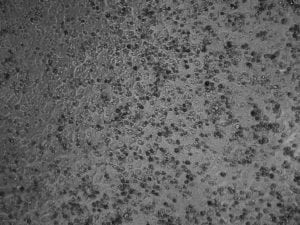
Samuel’s update: I have conducted a quail assay to test a new tumor module that we would like to use and it showed areas of improvement. We will continue to use the old modules that are proven (but less ideal for microscopy). I am preparing for another drug testing assay to be conducted over the weekend.
Dina’s update: This week I performed my first western blot in the lab to check for a drug-related target in hepatoblastoma. I also sorted another cell line for red fluorescence protein (RFP) expression. Below is an image of a gel running for a western blot (to check protein levels of a drug-target).
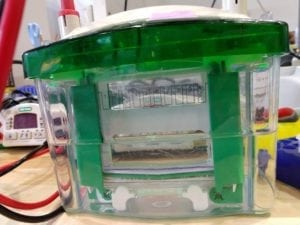
Samuel’s update: I conducted a quail assay drug test using a hepatoblastoma cell line with statistically significant results. Replicates of this experiment will need to be done but we are able to conduct quail assays on the promising drugs that Dina has been screening for.

Dina’s update: This week has been all about flow cytometery for me! I’ve been generating more RFP pure expressing hepatoblastoma cell lines using our awesome high speed cell sorter (pictured below) and using the Guava EasyCyte to look at cell cycle effects of possible drug targets.

Samuel’s update: I am working on a manuscript for publishing on the progress we have made with the quail assay. Another quail assay is being prepared for next week.
Dina’s update: This week I received my first hepatoblastoma CuReFast sample and its now (hopefully) growing in the incubator. I also performed analysis on the structural properties of one drug of interest. Below is an image of some of the cells I sorted last week, all glowing (colorized in green for better contrast on the computer screen, but it is actually Red Fluorescent Protein)!
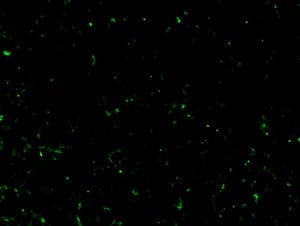
Samuel’s update: This week I have been preparing for some quail assay experiments. I have conducted a drug screen of some promising hits from the V4 drug screen. Soon I will be able to use any promising hits from this drug screen in the quail assay.
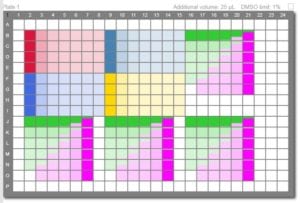
Dina’s update: This I’ve been analyzing data from previous drug screens, trying out new combinations of drugs on the hepatoblastoma cells, and working to get different accessories on our liquid handling robot up and running. Added is a video of the bulk reagent dispenser getting ready to work, so we can speed up our drug screens!
Samuel’s update: Dina and I have found some drugs that might show promise against hepatoblastoma. I have started a quail assay using the drug screen that I did this last week. I also have determined the cell density to use per quail for one of the transfected hepatoblastoma cell lines and am preparing to additional quail assays.
Dina’s update: This week I’ve been generating more cell lines with RFP-luciferase, testing other chemotherapuetics for use with volasertib, and processed a CureFAST sample.
Sam and I are combining for the picture this week: Here we are looking at his luciferase expressing cells under the UVP, collaborating on his quail egg experiments. Three photo options are included.
[about the picture … this just shows how much Dina and Samuel try to give you entertaining weekly visuals! we are, after all though, scientists … which explains many things about our blog!]


